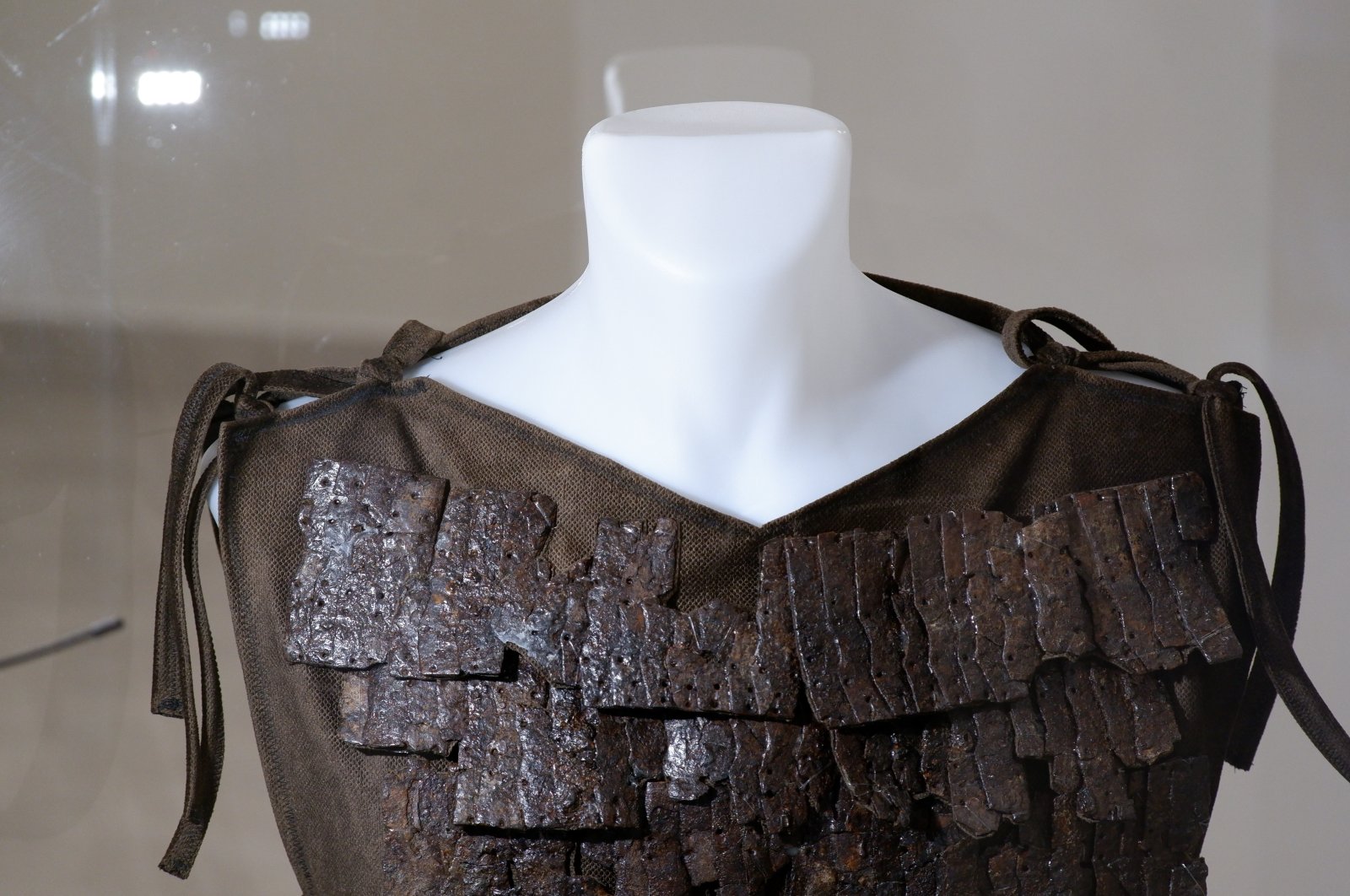
Unique 1,500-year-old Roman armor is set to be exhibited in Gümüşhane, northeastern Türkiye, the site where it was originally found.
After three years of meticulous work at the Erzurum Restoration and Conservation Regional Laboratory, all the plates of the armor were coded in place and conservation and restoration processes were completed.
Last month, the armor was exhibited at the Erzurum Museum as part of the Erzurum Cultural Route Festival and has now been sent back to its home in Gümüşhane.
The armor, known as the only surviving example of the Lorica Squamata model in the world, was restored. It was discovered during the 2020 excavation season at the ancient city of Satala in Gümüşhane and removed from the site with the contributions of the Ankara Regional Laboratory.
Dated to the late Roman period, this armor belongs to the Lorica Squamata model and is noted for its significance as the earliest known example of this type, the Ministry reported that the armor was brought to the Erzurum Restoration and Conservation Regional Laboratory in 2021, where it was examined through X-ray and tomography during the initial documentation phase while still encased in its soil.
X-ray results revealed that nearly all of the armor was intact, by performing micro-CT imaging on three blocks taken from the edges, the exact dimensions and some metallurgical properties were determined.
Following three years of careful work at the Erzurum Restoration and Conservation Regional Laboratory, all the plates of the armor were coded in place, and conservation and restoration processes were completed.
The armor was then reassembled on a mannequin to restore its original form and was finally mounted. During the Roman period, legionary armors were not customized for individuals but could be repaired and reused when necessary, if they were damaged beyond repair, they would be melted down and repurposed into other materials.
